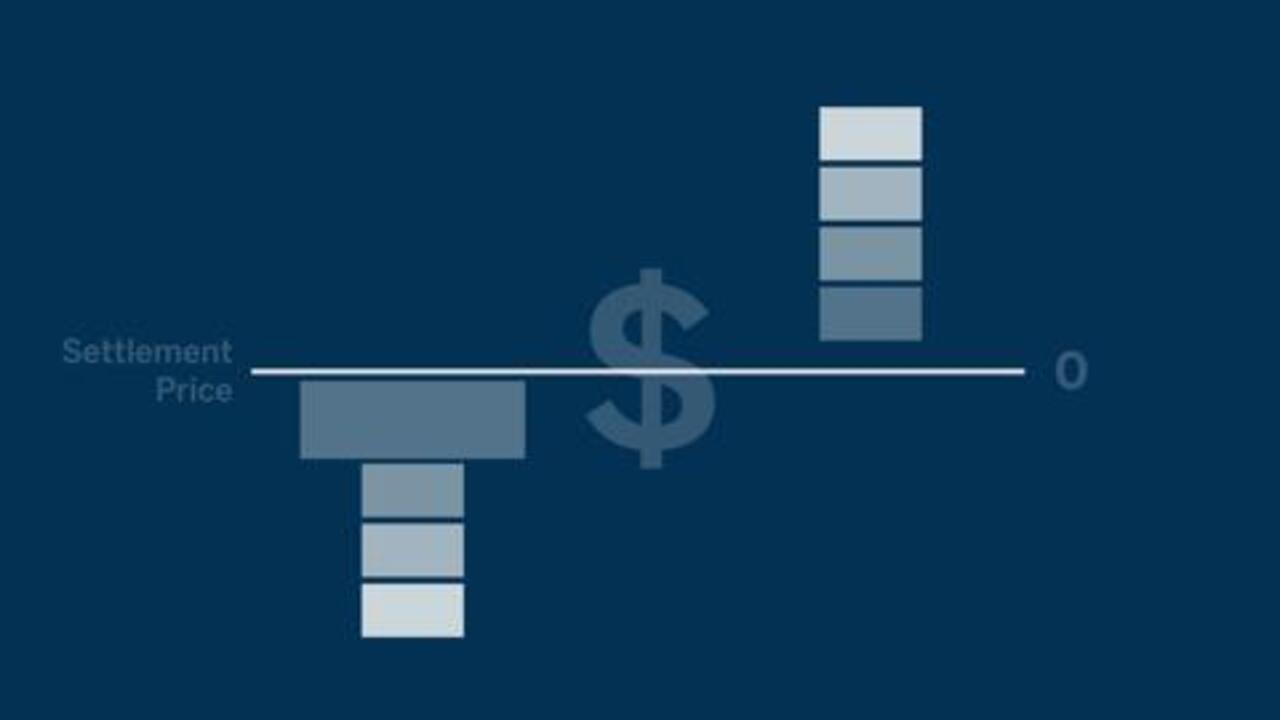

Finance
What Is TPA Insurance?
Published: November 6, 2023
Discover what TPA insurance is and how it relates to finance. Learn about the benefits and coverage provided by TPA insurance.
(Many of the links in this article redirect to a specific reviewed product. Your purchase of these products through affiliate links helps to generate commission for LiveWell, at no extra cost. Learn more)
Table of Contents
Introduction
Welcome to the world of insurance, where numerous policies and providers exist to protect individuals and businesses from financial risks. One such insurance model is Third Party Administrator (TPA) insurance. If you’re new to the term, you might be wondering what TPA insurance is all about. Well, you’ve come to the right place!
TPA insurance plays a vital role in the insurance landscape by providing services on behalf of insurance companies or self-insured organizations. It acts as an intermediary between the policyholder and the insurance provider, handling various administrative tasks and facilitating smooth claims processing. Understanding TPA insurance is crucial for individuals and businesses who want to maximize their coverage and streamline their insurance experience.
In this article, we will delve into the world of TPA insurance, discussing its definition, how it works, and the benefits and limitations it offers. We will also explore the key players involved in TPA insurance and compare it to traditional insurance models. By the end of this article, you will have a clear understanding of TPA insurance and its role in the insurance realm.
Definition of TPA Insurance
TPA insurance, also known as Third Party Administrator insurance, is an insurance model where a third party entity, known as a Third Party Administrator (TPA), administers the insurance policies on behalf of an insurance company or a self-insured organization. The TPA acts as an intermediary between the policyholder and the insurance provider, managing various administrative tasks such as policy enrollment, claims processing, and policyholder communications.
The role of the TPA in TPA insurance is to ensure a seamless experience for policyholders, handling all the necessary paperwork, documentation, and coordination with healthcare providers or service providers, depending on the type of insurance. TPAs can specialize in specific types of insurance, such as health insurance or property and casualty insurance, or offer a wide range of insurance services.
One key aspect of TPA insurance is that the insurance company or self-insured organization retains the financial risk of the policies, while the TPA handles the administrative functions. This means that the TPA is responsible for processing claims, managing policyholder information, and providing customer support, but the financial payouts for claims are covered by the insurance company or self-insured organization.
TPA insurance is commonly used by employers offering health insurance coverage to their employees. Instead of directly managing the insurance plans and claims processing, employers outsource these functions to a TPA. The TPA then handles the day-to-day operations of the health insurance plans, including managing policy enrollment, handling claims, and assisting employees with any coverage-related inquiries.
Overall, TPA insurance acts as a bridge between policyholders and insurance providers, streamlining the administrative tasks associated with insurance policies and ensuring a smooth and efficient insurance experience.
How TPA Insurance Works
TPA insurance operates through a collaborative process between the policyholder, the TPA, and the insurance provider or self-insured organization. Let’s take a closer look at how TPA insurance works:
Policy Enrollment: The TPA manages the policy enrollment process, including collecting the necessary information from the policyholder and facilitating the issuance of the insurance policy. This involves verifying the eligibility of the policyholder, reviewing their application, and ensuring that all required documentation is complete.
Claims Processing: One of the key responsibilities of the TPA is to handle the claims processing. When a policyholder experiences a covered event, such as an accident or illness, they submit a claim to the TPA for reimbursement or direct payment to the service provider. The TPA reviews the claim, verifies its validity based on the policy terms and conditions, and processes the payment accordingly. This involves evaluating the documentation provided, coordinating with healthcare providers or service providers, and facilitating the settlement of the claim.
Policyholder Support: The TPA serves as the primary point of contact for policyholders, providing assistance and support throughout the policy term. This includes addressing any inquiries or concerns related to coverage, claims, and policy details. The TPA acts as a liaison between the policyholder and the insurance provider, ensuring effective communication and timely resolution of any issues that may arise.
Provider Network Management: In certain types of TPA insurance, such as health insurance, the TPA is responsible for managing the provider network. This involves establishing contracts with healthcare providers, negotiating reimbursement rates, and maintaining a comprehensive network of providers for policyholders to access. The TPA ensures that policyholders have access to quality healthcare services within their coverage network.
Data Management and Reporting: The TPA handles the management of policyholder data and generates various reports for both the insurance provider or self-insured organization and the policyholders. This includes maintaining accurate records of policyholder information, claims history, and other relevant data. The TPA utilizes technology and systems to efficiently manage the data and generate reports that provide insights into the insurance coverage and utilization for analysis and decision-making purposes.
In summary, TPA insurance works by outsourcing the administrative functions of insurance policies to a third party entity, the TPA. This allows policyholders to receive efficient and effective insurance services while enabling insurance providers or self-insured organizations to focus on their core operations.
Benefits of TPA Insurance
TPA insurance offers several benefits to both policyholders and insurance providers or self-insured organizations. Let’s explore some of the key advantages of TPA insurance:
Efficient Claims Processing: One of the primary benefits of TPA insurance is the streamlined claims processing. TPAs are experts in handling claims, which means that policyholders can expect faster and more efficient processing of their claims. The TPA has the expertise and systems in place to review and process claims swiftly, ensuring that policyholders receive their reimbursements or direct payments in a timely manner.
Enhanced Customer Service: TPAs play a crucial role in providing excellent customer service to policyholders. They act as a dedicated point of contact for policyholders, assisting them with any queries or concerns related to their insurance coverage. The TPA’s expertise in handling policyholder inquiries ensures that any issues are quickly addressed and resolved, providing a high level of customer satisfaction.
Expertise and Knowledge: TPAs have deep knowledge and expertise in insurance administration. They stay updated with the latest industry trends, regulations, and best practices, ensuring that policyholders receive accurate information and guidance. This expertise is particularly valuable for policyholders who may not have extensive knowledge of insurance terms and processes.
Cost Savings: By outsourcing administrative functions to a TPA, insurance providers or self-insured organizations can achieve significant cost savings. TPAs have specialized systems and technologies to handle policy enrollment, claims processing, and data management efficiently. This enables insurance providers to reduce administrative costs and allocate more resources to core business operations.
Access to a Network of Providers: In certain types of TPA insurance, such as health insurance, policyholders can benefit from an extensive network of healthcare providers. TPAs are responsible for managing and maintaining these provider networks, ensuring that policyholders have access to a wide range of healthcare services within their coverage network. This network can include hospitals, clinics, and specialized healthcare practitioners.
Customized Solutions: TPAs offer flexibility in designing insurance solutions to meet the specific needs of policyholders. They can tailor coverage options, cost structures, and benefit plans to align with the requirements of individuals or businesses. This ensures that policyholders have insurance policies that are customized and suited to their unique needs.
Overall, TPA insurance provides numerous benefits, including efficient claims processing, enhanced customer service, expertise and knowledge, cost savings, access to a network of providers, and customized solutions. These advantages contribute to a smooth and satisfactory insurance experience for both policyholders and insurance providers or self-insured organizations.
Limitations of TPA Insurance
While TPA insurance offers many benefits, it also has certain limitations that policyholders and insurance providers should be aware of. Let’s explore some of the limitations of TPA insurance:
Limited Control for Insurance Providers: In TPA insurance, the insurance provider or self-insured organization delegates the administrative tasks to the TPA. This means that the insurance provider has limited control over the day-to-day operations of the insurance policies. While this delegation frees up resources and allows the insurance provider to focus on core operations, it also relinquishes some control over customer interactions and claims processing.
Dependence on TPA Performance: The performance and efficiency of the TPA can significantly impact the overall insurance experience. If the TPA is not responsive, lacks expertise, or has inefficient claims processing systems, it can lead to delays and frustrations for policyholders. Insurance providers or self-insured organizations must carefully select a reputable and reliable TPA to ensure a seamless experience for policyholders.
Limited Personalization: While TPAs can offer customized solutions to some extent, there may be limitations in terms of the level of personalization available. Policyholders may have specific requirements or preferences that cannot be fully accommodated within the standard offerings of TPA insurance. In such cases, policyholders may need to explore alternative insurance models or providers that can offer more tailored coverage options.
Potential Conflicts of Interest: In some cases, TPAs may have relationships with specific healthcare providers or service providers within their network. While this can provide convenient access to healthcare services, it can also create potential conflicts of interest. Policyholders should be aware of any potential bias in provider recommendations or referrals and ensure that they have the option to choose providers outside the network if desired.
Limited Transparency: Policyholders may have limited visibility into the administrative processes and decisions made by the TPA. The TPA is responsible for managing policyholder data and claims processing, and the policyholder may not have full transparency into every aspect of those processes. This lack of transparency can sometimes create confusion or concern for policyholders.
Complexity in Coordination: TPA insurance involves coordination between multiple stakeholders, including policyholders, TPAs, insurance providers, and healthcare providers or service providers. This complexity in coordination can sometimes result in miscommunication or delays, leading to dissatisfaction or inefficiencies in the insurance process. Effective communication and collaboration among all parties are essential to mitigate these challenges.
While TPA insurance has its limitations, it remains a widely adopted insurance model due to its many benefits. Understanding these limitations can help policyholders and insurance providers navigate the TPA insurance landscape more effectively and make informed decisions regarding their insurance needs.
Key Players in TPA Insurance
TPA insurance involves various key players who play different roles in the administration and management of insurance policies. Let’s take a closer look at the key players in TPA insurance:
Third Party Administrator (TPA): The TPA is the primary player in TPA insurance. They are the third-party entity responsible for administering the insurance policies on behalf of insurance providers or self-insured organizations. The TPA manages policy enrollment, claims processing, customer support, provider network management, and data management. They act as a liaison between policyholders and insurance providers, ensuring a smooth and efficient insurance experience.
Insurance Providers: Insurance providers are the companies that underwrite the insurance policies and assume the financial risk. They partner with TPAs to handle the administrative functions while retaining the responsibility for paying out claims. Insurance providers collaborate with TPAs to design insurance products, establish coverage terms and conditions, and ensure compliance with regulatory requirements. They rely on TPAs to deliver excellent customer service and seamless claims processing on their behalf.
Policyholders: Policyholders are the individuals or businesses that purchase the insurance policies. They enter into agreements with insurance providers and rely on the services provided by the TPA for policy enrollment, claims processing, and customer support. Policyholders pay premiums to the insurance providers in exchange for coverage and benefits as outlined in the insurance policies.
Healthcare Providers or Service Providers: Healthcare providers or service providers are entities that offer medical or other services covered by TPA insurance policies. This can include hospitals, doctors, specialists, diagnostic centers, pharmacies, rehabilitation centers, and more. TPAs coordinate with healthcare providers or service providers to ensure seamless claims processing, reimbursement, or direct payments for the services received by policyholders.
Employers: In the case of group insurance policies, employers play a vital role as the entity offering insurance coverage to their employees. Employers collaborate with TPAs to enroll employees in the insurance plans, establish contribution structures, and facilitate communication between employees and the TPA regarding coverage, claims, and other policy-related matters. Employers rely on the expertise of TPAs to effectively manage their group insurance programs and provide comprehensive coverage to their employees.
Regulatory Authorities: Regulatory authorities play a critical role in overseeing the TPA insurance industry. They establish and enforce regulations that govern the operations of TPAs and ensure compliance with industry standards. These authorities aim to protect policyholders’ rights and maintain the integrity and transparency of the insurance market. Regulatory authorities monitor TPAs to ensure fair practices and the adherence to ethical standards of the industry.
These key players work together to ensure the smooth operation of TPA insurance. The collaboration between TPAs, insurance providers, policyholders, healthcare providers or service providers, employers, and regulatory authorities is essential for an efficient and effective TPA insurance system.
TPA Insurance vs. Traditional Insurance Models
TPA insurance and traditional insurance models differ in their approach to administering and managing insurance policies. Let’s compare these two models to understand their distinctions:
Administration: In traditional insurance models, insurance providers handle the entire insurance process internally, including policy enrollment, claims processing, and customer support. They have dedicated departments and staff members to manage these functions. On the other hand, TPA insurance involves outsourcing the administrative tasks to a third party entity, the TPA. The TPA specializes in insurance administration, acting as an intermediary between policyholders and insurance providers.
Control and Flexibility: Traditional insurance models give insurance providers full control over the processes, policies, and customer interactions. This allows them to tailor their services according to their own guidelines and preferences. In TPA insurance, the insurance provider delegates certain administrative tasks to the TPA, relinquishing some control over the day-to-day operations. This trade-off offers the insurance provider more flexibility to focus on core operations while benefiting from the expertise and efficiency of the TPA.
Expertise and Efficiency: TPAs specialize in insurance administration and have the knowledge and expertise to handle claims processing, customer service, and other administrative tasks. They have established systems and processes that allow for efficient and streamlined operations. In comparison, traditional insurance models may have dedicated departments but may not have the same level of expertise or systems specific to insurance administration.
Costs: Traditional insurance models can be more expensive for insurance providers due to the need to maintain administrative departments and staff. TPAs can offer cost savings to insurance providers as they handle administrative tasks more efficiently and at scale. This allows insurance providers to allocate resources to their core operations, potentially leading to cost reductions for both the insurance provider and the policyholders.
Customer Service: Traditional insurance models allow insurance providers to have direct interactions with policyholders, providing a personalized experience for customers. However, the consolidation of administrative tasks through TPAs in TPA insurance can enhance customer service in terms of speed and efficiency. TPAs serve as dedicated points of contact, with specialized knowledge and systems to address policyholders’ needs promptly and professionally.
Customization: Traditional insurance models may offer more flexibility in terms of customizing coverage options and policy terms. Insurance providers can design policies that meet specific requirements of policyholders. In TPA insurance, customization options are available to some extent, but there may be limitations depending on the standard offerings of the TPA.
Regulatory Compliance: Both traditional insurance models and TPA insurance are subject to regulatory compliance requirements. Insurance providers, whether utilizing a TPA or not, must adhere to regulations governing the insurance industry. However, TPAs also have specific regulatory compliance obligations as third party entities responsible for handling policyholder data, claims processing, and other administrative tasks.
Overall, TPA insurance and traditional insurance models offer distinct approaches to insurance administration and management. The choice between these models depends on various factors such as the insurance provider’s priorities, resources, and the desired level of control and efficiency in handling administrative tasks.
Conclusion
TPA insurance, or Third Party Administrator insurance, serves as an essential component of the insurance industry, providing efficient and effective administration of insurance policies on behalf of insurance providers or self-insured organizations. Throughout this article, we have explored the definition of TPA insurance, how it works, and the benefits and limitations it offers.
TPA insurance offers several advantages, including efficient claims processing, enhanced customer service, expertise and knowledge, cost savings, access to a network of providers, and customized solutions. These benefits contribute to a smooth and satisfactory insurance experience for both policyholders and insurance providers or self-insured organizations.
However, it is important to note the limitations of TPA insurance, such as limited control for insurance providers, dependence on the TPA’s performance, limited personalization options, potential conflicts of interest, limited transparency, and complexity in coordination. Understanding these limitations can help policyholders and insurance providers navigate the TPA insurance landscape effectively and make informed decisions based on their specific needs.
Furthermore, we have discussed the key players in TPA insurance, including TPAs, insurance providers, policyholders, healthcare providers or service providers, employers, and regulatory authorities. Effective collaboration among these key players is crucial for a seamless and efficient TPA insurance system.
Lastly, we compared TPA insurance with traditional insurance models, highlighting the differences in administration, control, expertise and efficiency, costs, customer service, customization, and regulatory compliance. The choice between TPA insurance and traditional insurance models depends on the priorities, resources, and objectives of the insurance provider.
In conclusion, TPA insurance plays a vital role in the insurance landscape, providing streamlined administration and efficient claims processing. With its benefits, limitations, and key players, TPA insurance continues to shape the insurance industry, enhancing the experience for policyholders and optimizing operations for insurance providers.














